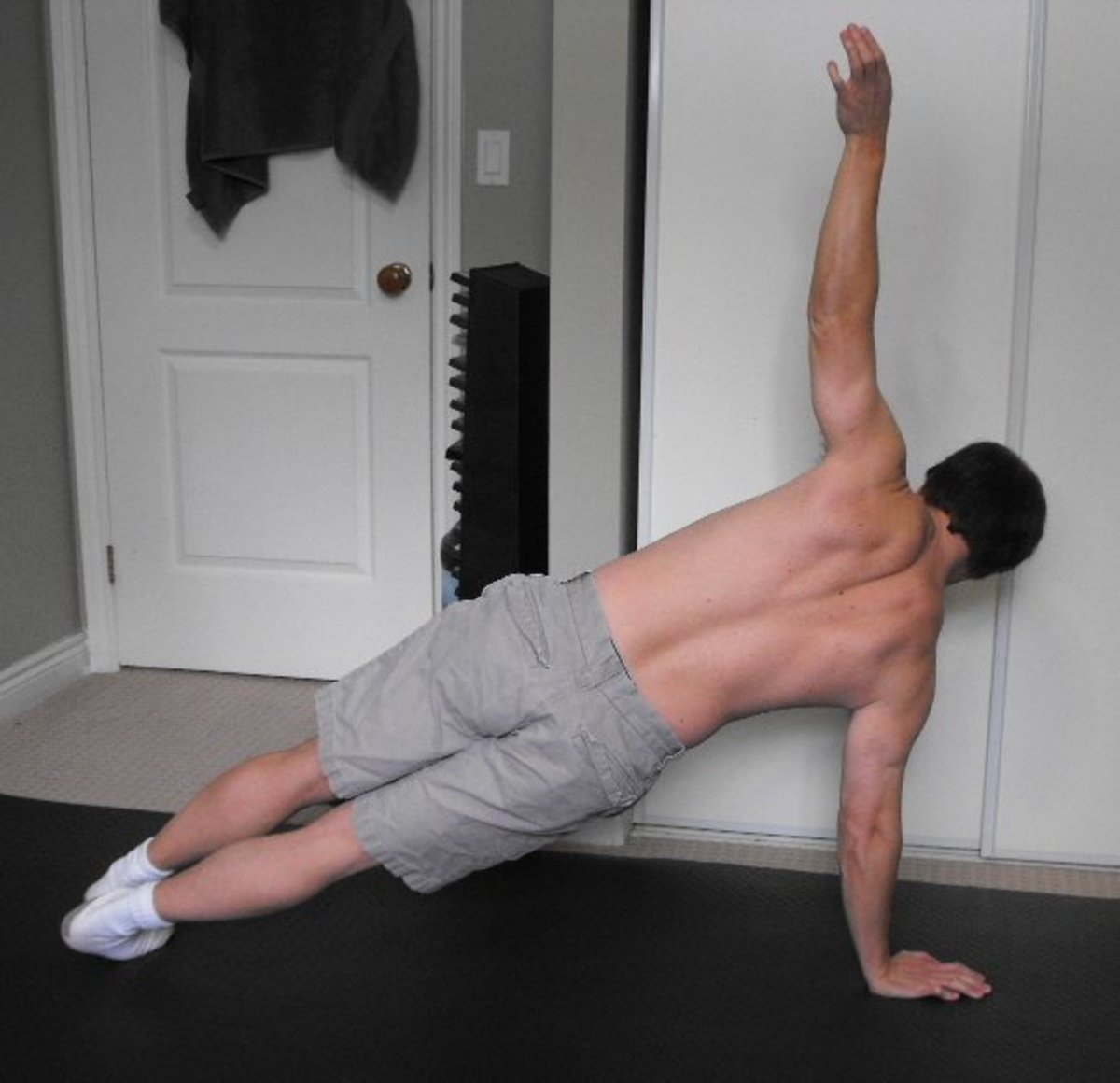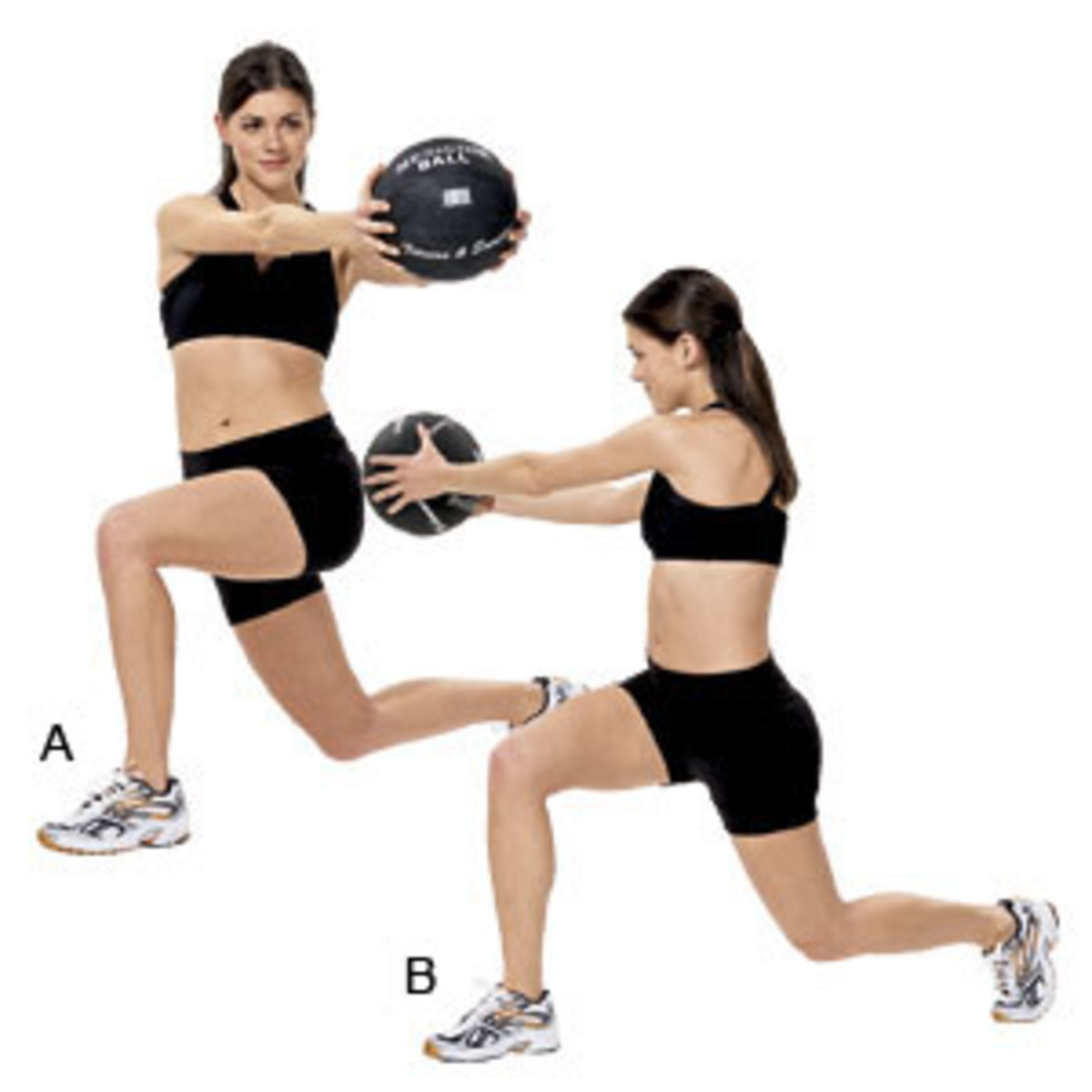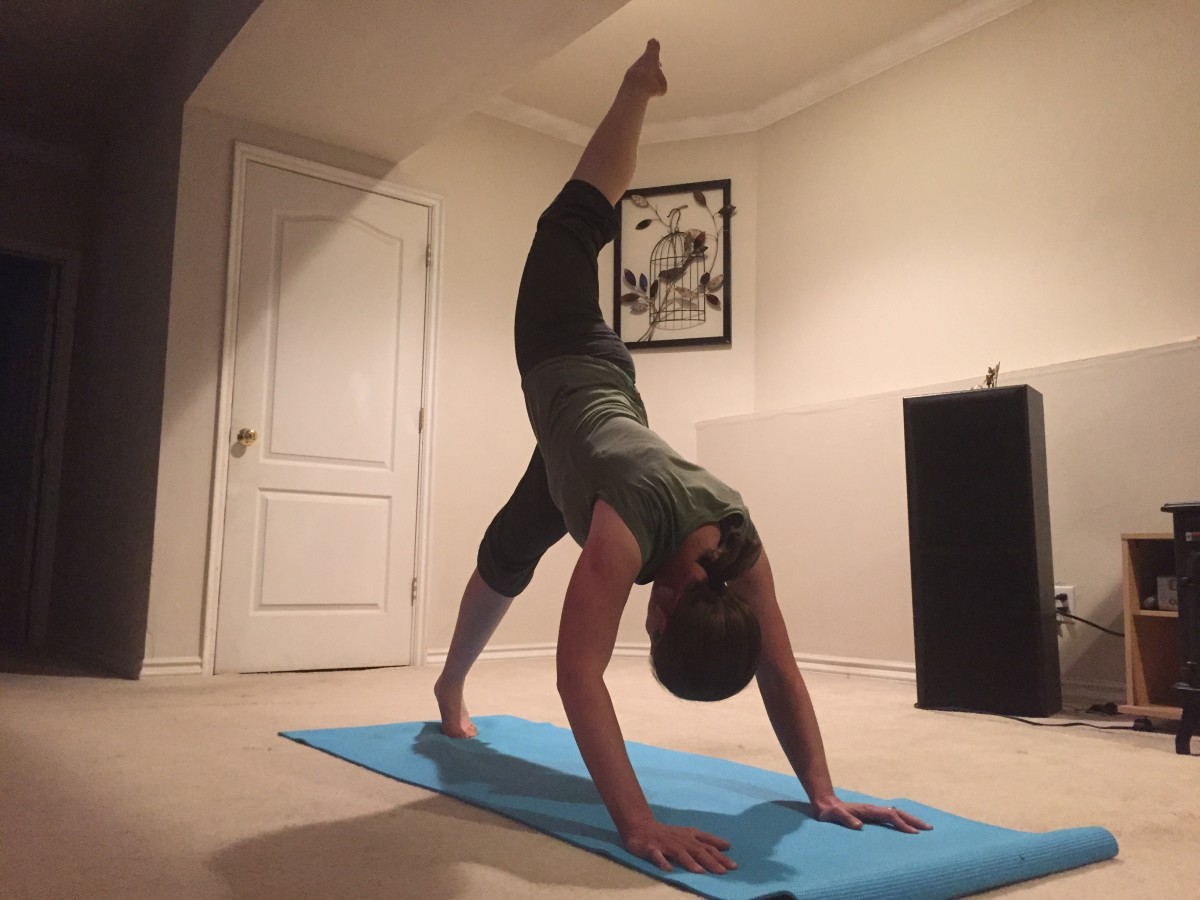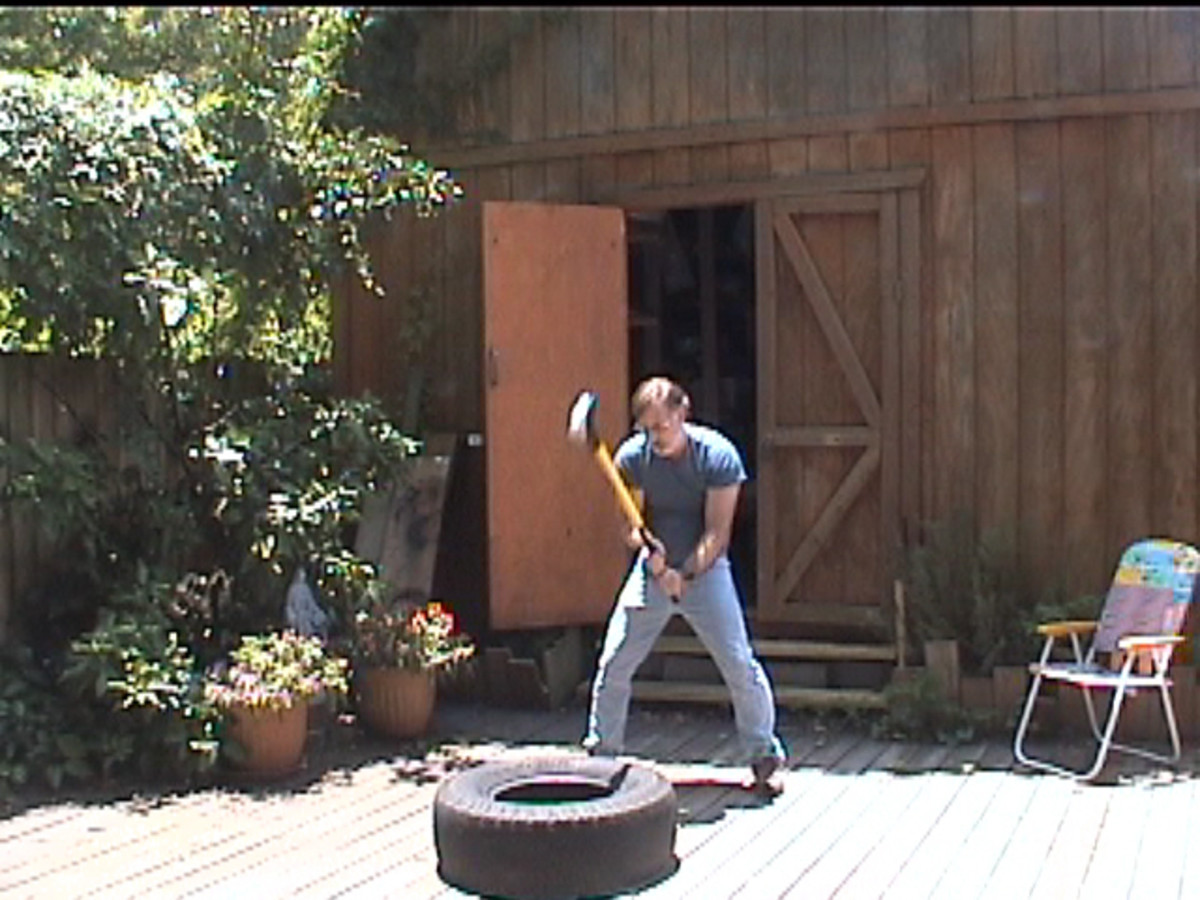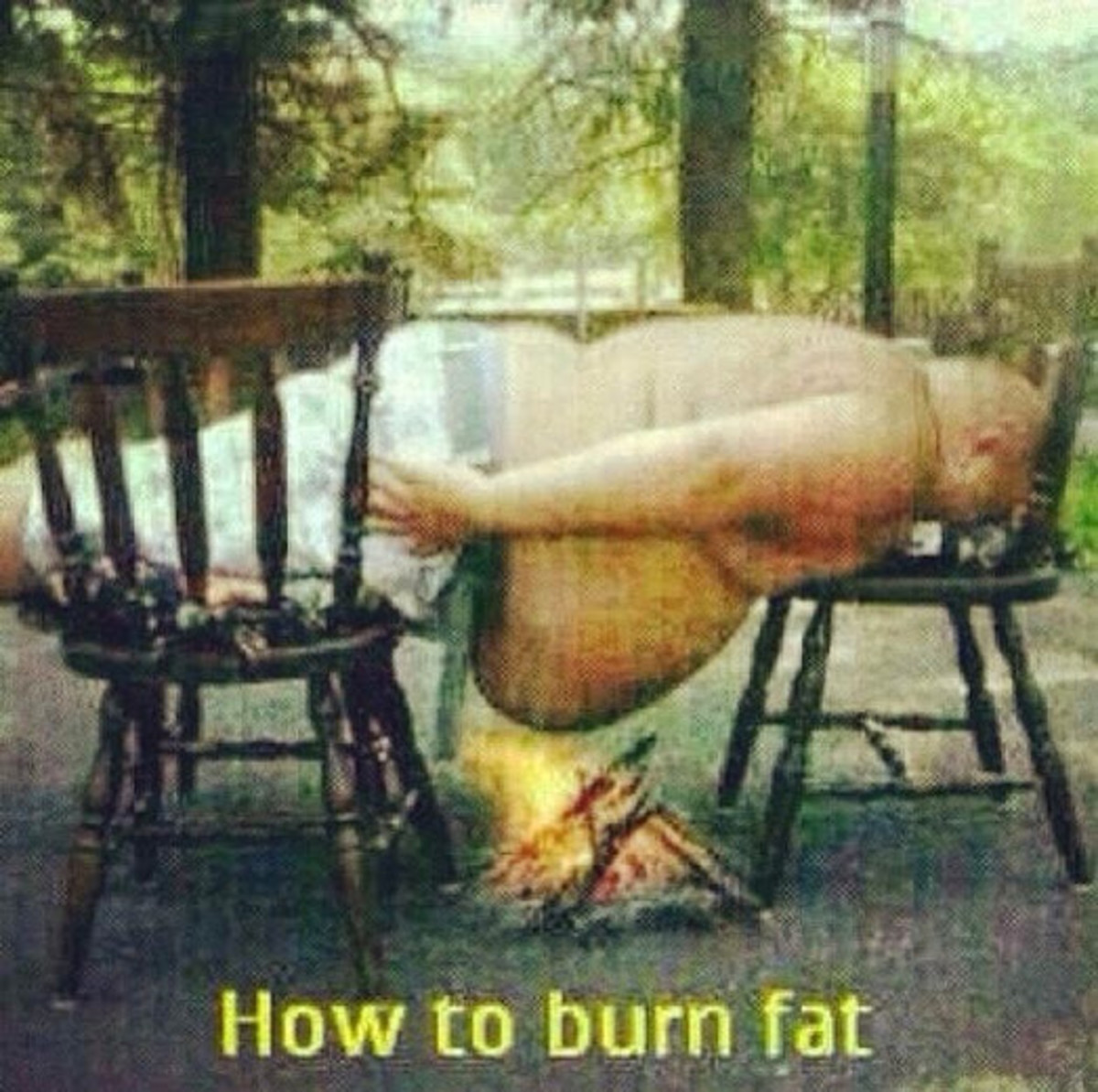The Four Minute Work Out: The Ultimate Cardio and Fat Burning Workout

The Experiment
In the Mid 1990's, a Japanese scientist by the name of Dr Izumi Tabata conducted an experiment with Olympic speed skaters. The experiment consisted of two groups. The control group exercised 5 days a week for 4 weeks for an hour each day. The other group exercised for 4 minutes a day also for 5 days a week for 4 weeks. Both groups exercised on a stationary bike except the control group maintained a moderate pace (50-70% of max effort) while the 2nd group exerted max effort for 20 seconds, rested for 10 seconds then repeated the cycle for an additional 7 sets for a total of 8 sets. The high intensity group often reached failure before the 8th set and required a significant amount of motivation to continue. It is essential that athletes are working at max effort in order to ellicit the target metabolic change.
The Results
The results of the experiment were astounding. The steady state group had a higher VO2max at the end (from 52 to 57 ml/kg/min), but the Tabata group had started lower and gained more overall (from 48 to 55 ml/kg/min). That's a 14% increase with the high intensity group vs 9% with the steady state group with 56 minutes less time exercising per session. Also, only the Tabata ( high intensity) group had gained anaerobic capacity benefits ie they increased their lactate threshold. Lactate threshold is the point in which lactic acid floods the muscle slowing the rate of contraction and or halting all together. Other wise known as muscle failure. Ever run so hard that your muscle start to burn or even completely lock up? At that point your muscles have reached their lactate or anaerobic threshold (LT or AT) which for most of us it is around 2 minutes of max effort. Elite athletes have a higher LT then the rest of us hence that is why they can maintain a higher rate of muscle contraction. That means they run faster for longer.
Why Does it Work?
This new form of exercise, I say new but high intensity interval training (HIIT) has been around for awhile, goes against what most people say is the most effective method for performance enhancement. It has long been thought that long moderate exercise is the best road to fitness and performance. Increasing VO2 max through hours and hours of training.However this lower intensity exercise limits bodily exposure to stresses that cause the body to adapt and grow. To put it into perspective, if your goal was to bench press 300 pounds you won't get there by doing 3 sets of 10 of 150 pounds. Take for example a runner with a solid base capable of running a 5K at a 7 min/ mile pace. Take the same runner and ask him to run at a 6:30 min/mile pace but instead of maintaining the pace he eventually slows down and finishes much slower than usual. What's happening is our runner has exceeded his VO2 max by demanding more out of his muscles by running faster. He feels out of breath because his muscles require more fuel. Aerobically speaking, oxygen is required to fuel your muscles. When we exercise at a moderate intensity our bodies can convert glucose to ATP at a rate high enough to sustain the activity for long periods of time. Oxygen produces ATP (adenosine triphosphate) which is used as fuel. The rate at which we produce ATP is a function of how much oxygen we can process which is VO2 max. The experiment that Dr Tabata conducted resulted in an increase VO2 max by having athletes operate almost exclusively at VO2 max during their workouts. The body responded by processing oxygen more efficiently. We can not operate at VO2 max for very long hence why interval training is relatively short and repeated several times giving the body more exposure to max effort while remaining below the lactate threshold. Once the body reaches LT it is no longer operating aerobically and VO2 is not increased. Dr Tabata determined the 2:1 ratio produced the best results giving the body just enough rest to remain below LT while operating at VO2 Max. The result longer and higher performance through more efficient oxygen consumption and muscular endurance.
How Does it Burn More Fat?
Long moderate aerobic activity does burn a higher percentage of fat than more strenuous exercise however at max effort, the body will burn a higher quantity overall. So it doesn't matter the percentage of fat what matters is quantity. During physical exertion, carbohydrates are the body's preferred fuel source as it is easier and faster to convert to fuel when max effort is required. This a left over from our days living caves when explosive physical exertion was needed to survive...like running away from sabertooth tigers. Fat is mostly reserved for long term fuel consumption when quick energy is not needed. Like sitting on the couch. But what HIIT does that low intensity long duration exercise does not is increase the resting metabolic rate (RMR). This increase in RMR has shown to remain for up to 2 days after the activity where long moderate intensity exercise almost immediately results in a drops to pre-workout RMR's. So what you have with HIIT is a high RMR while sitting on the couch where the primary source of fuel is fat. This is because of excess post oxygen consumption or EPOC. EPOC is the body's efforts to return itself to its pre-workout state. That means
- Replenish energy stores (such as ATP and muscle glycogen)
- Re-oxygenate the blood
- Restore body temperature levels to a pre-exercise state
- Restore pre-exercise breathing and heart-rate levels
All of these processes require the consumption of additional oxygen, as well as energy, after exercise.
In other words, restoring the body to its pre-exercise state is work. And work means additional expenditure of energy beyond the energy consumed to perform that work.
What also helps fat burning is the increase in anaerobic capacity or muscular endurance. A stronger muscle requires more fuel which is good news for those wanting to burn fat while maintaining muscle.
The Tabata Protocol
As mentioned earlier, this 2:1(20 seconds of work, 10 seconds of rest) ratio of HIIT was created by Dr Izumi Tabata and so named the Tabata Protocol or Method. Make no mistake this is by no means an easy workout. If you are conducting the workout correctly you should be completely exhausted by the 8th set. In fact it is not advised for beginners. You should already be in decent shape before you attempt any HIIT let alone Tabata intervals. Expect to reach max heart rates by the 3rd or 4th set. The tough part comes when you have to keep going another 4-5 sets at, you guessed it, max effort. Only you know if you are giving it your all. Expect your performance to worsen as you go but don't distress that just means you're doing it right. Max effort is the key.
My recommendation is it choose exercises that work the whole body. Sprints, squat jumps, Burpees etc. By working large muscles (legs, core, back) or multiple muscle groups at once, you are placing your body in a greater oxygen debt than if you worked smaller muscles. Generally people don't get winded doing bicep curls.
Sample Exercises
As a rule I workout 5 days a week. On the weekend I do still engage in physical activity but it almost always is for recreation. I also listen to my body and if I feel I need a break I take it. The body needs time to recover and over training can and will produce negative returns. If I don't match my previous day's workout I take that as a sign that I need more rest. I also vary my workouts to avoid stagnation.
Main Exercises. I do one of these exercises per workout at a minimum. These work the largest muscle groups and will generate the greatest gains.
Sprints
Squat Jumps/ Knee Tuck Jumps
Surfer Pop Ups (Alternate feet either every pop up or every set)
High Knees
Burpees
Squat Kicks
Stationary Bike
Additional Exercises. These are add on's once you complete one of the core exercises above. Remember all you should need to do is one exercise to improve however if you are looking for a more total body workout and you are feeling good then go for it. As a rule if my heart rate can not return to below 120 within 2 minutes after completing one of the above exercises, my workout is over. Do not over train. Workout smarter not harder.
Push ups (plyo, clap, diamonds, incline, decline)
Pull ups (don't be surprised if you don't go the whole 8 sets without help, like a chair)
Shadow Boxing
Horizontal pull up ( easier than regular pull ups)
Disclaimer
Before all you long distance runners comment on this hub please keep in mind that I'm not advocating not doing any long moderate exercise. Quite the opposite. I believe a good base, achieved only through moderate long duration exercise, is required before attempting HIIT or Tabata. This short workout will give you that edge or break you out of that rut or lose that last little flab. It is great for those that don't have time and can be down anywhere.Be advised that you are more apt to injury when preforming HIIT or Tabata so pay attention to form and listen to you body.
I have been a runner for over 20 years and often dreaded these types of workouts when I ran competitively. To put things in perspective, when I take a break from HIIT I usually do a 30-40 minute run on the beach at a 8 min/mile pace.
- Things you absolutely have to do on Okinawa
Okinawa is a small island chain south of the main island of Japan. It is un-mistakenly Japanese but the Okinawans are a distinct ethnicity different from Japanese. Of Chinese descent, they usually are slightly...
- Stop paying for cable and satellite TV. Watch it for free: Apple TV and other Media Receivers Review
Are you tired of paying for cable or satellite and still not finding anything to watch? Do you have hundreds of channels but find you only watch a select 2 or 3 shows? Sever the subscription TV tether and go...
- Hawaiian travel tips for surfers (Oahu)
Back in July I recently had the chance to travel to Hawaii on the company dime. Here are some travel tips that I recommend not just for surfers but for anyone. 1. Dont bring your surfboard.... - Mixed Martial Arts and Traditional Martial Arts: Which is better?
As a traditional martial artist for over 20 years having trained in several styles and dojos and even spent 3 years in Japan training with world recognized masters, you would think I would side with...




